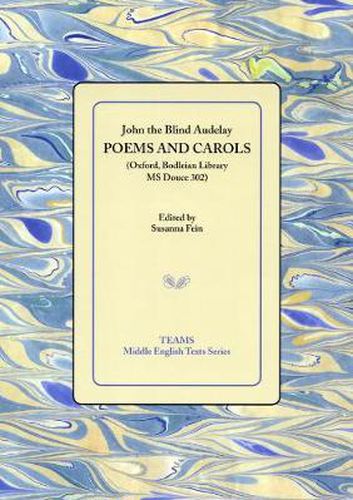Readings Newsletter
Become a Readings Member to make your shopping experience even easier.
Sign in or sign up for free!
You’re not far away from qualifying for FREE standard shipping within Australia
You’ve qualified for FREE standard shipping within Australia
The cart is loading…






Audelay’s idiosyncratic devotional tastes, interesting personal life history, and declared political affiliations-loyalty to king, upholder of estates, anxiety over heresy-make him worthy of careful study beside his better-known contemporaries. Of particular note: MS Douce 302 preserves Audelay’s own alliterative Marcolf and Solomon, a poem thought to be descended from Langland’s Piers Plowman. The Audelay Manuscript also contains unique copies of other alliterative poems of the ornate style seen in Gawain and the Green Knight and The Pistel of Swete Susan. These pieces are Paternoster and Three Dead Kings, both set at the end of the book. Whether or not they are Audelay’s own compositions, they seem certain to be his own selections. Audelay also displays a persistent habit of sequencing materials in generic and devotionally affective ways. His is a pious sensibility delicately honed by reverence for the liturgy and by an awe of God. That Audelay’s poetry can awaken us to new poetic sensitivities in medieval devotional verse is reason enough to bring him into the ambit of canonical fifteenth-century English poets.
$9.00 standard shipping within Australia
FREE standard shipping within Australia for orders over $100.00
Express & International shipping calculated at checkout
Audelay’s idiosyncratic devotional tastes, interesting personal life history, and declared political affiliations-loyalty to king, upholder of estates, anxiety over heresy-make him worthy of careful study beside his better-known contemporaries. Of particular note: MS Douce 302 preserves Audelay’s own alliterative Marcolf and Solomon, a poem thought to be descended from Langland’s Piers Plowman. The Audelay Manuscript also contains unique copies of other alliterative poems of the ornate style seen in Gawain and the Green Knight and The Pistel of Swete Susan. These pieces are Paternoster and Three Dead Kings, both set at the end of the book. Whether or not they are Audelay’s own compositions, they seem certain to be his own selections. Audelay also displays a persistent habit of sequencing materials in generic and devotionally affective ways. His is a pious sensibility delicately honed by reverence for the liturgy and by an awe of God. That Audelay’s poetry can awaken us to new poetic sensitivities in medieval devotional verse is reason enough to bring him into the ambit of canonical fifteenth-century English poets.